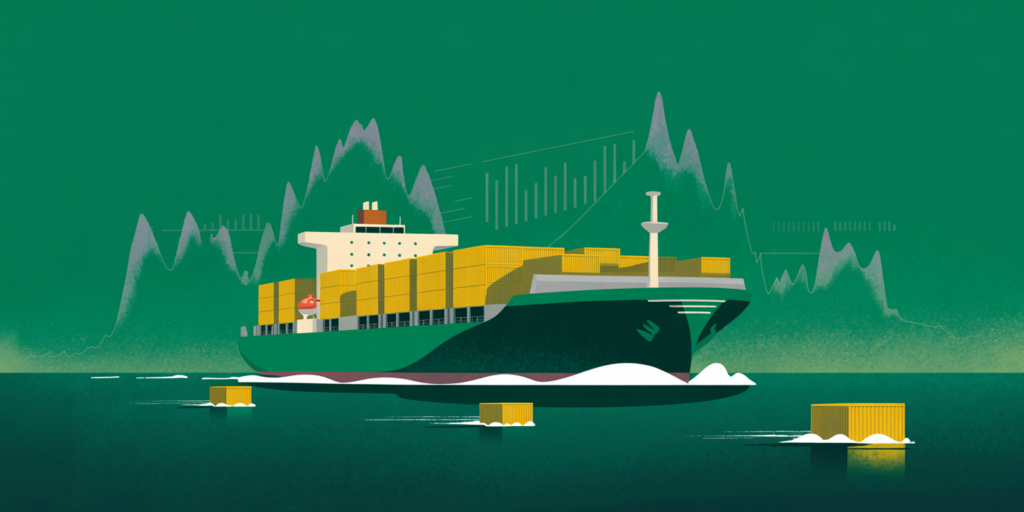E-commerce Fulfillment for Modern Brands: Definition, Process & B2B Best Practices
E-commerce fulfillment sounds simple on paper: a customer places an order, and the order arrives on time and in perfect condition. In practice, it’s an end‑to‑end system that begins long before a parcel hits a truck and continues long after a delivery lands at a doorstep or a buyer’s dock. In this guide, we unpack what fulfillment actually means, how the step‑by‑step process works, which technology runs it, and how to choose the right operating model as you grow. Along the way, we’ll highlight how Unicargo supports both DTC and B2B brands with a tech‑forward, global approach.
Key Takeaways (TL;DR)
- E-commerce fulfillment covers everything from receiving and storing goods to shipping and handling returns – it’s much more than just “shipping.”
- Returns are a big deal: nearly 17% of U.S. retail sales in 2024 were expected to come back, so reverse logistics must be planned from day one.
- B2B fulfillment brings added complexity with strict requirements like Advance Ship Notices (ASNs) and booked delivery appointments.
- A strong tech stack – WMS, OMS, and real-time visibility tools – is the backbone of accurate, scalable fulfillment.
- Network design impacts cost and speed more than carrier choice: three well-placed U.S. warehouses can cover 80% of customers in two days.
What is e-commerce fulfillment?
E-commerce fulfillment is the work of receiving your goods, storing them, processing each order, packing and labeling the right items, handing them to a carrier, tracking the shipment, and handling any returns. Shipping is only one part of this larger chain. Fulfillment ties together inventory availability, warehouse operations, carrier performance, and customer experience into one repeatable process. When it works, customers get what they expect, when they expect it, with no surprises.
Returns are part of fulfillment, too. In 2024, U.S. retailers projected that 16.9% of annual sales would be returned – almost $890 billion worth of merchandise. That’s a stark reminder that your returns flow and reverse logistics are as important as your outbound shipping.
Fulfillment isn’t only for DTC. B2B ecommerce – from wholesale to institutional procurement – has exploded in recent years and often brings stricter requirements, such as palletized shipments, advance shipping notices (ASNs), and booked delivery appointments at distribution centers. The U.S. government’s trade office projects global B2B ecommerce to keep growing at a double‑digit CAGR through the mid‑2020s, which means more complex, higher‑volume B2B flows will keep entering fulfillment networks.
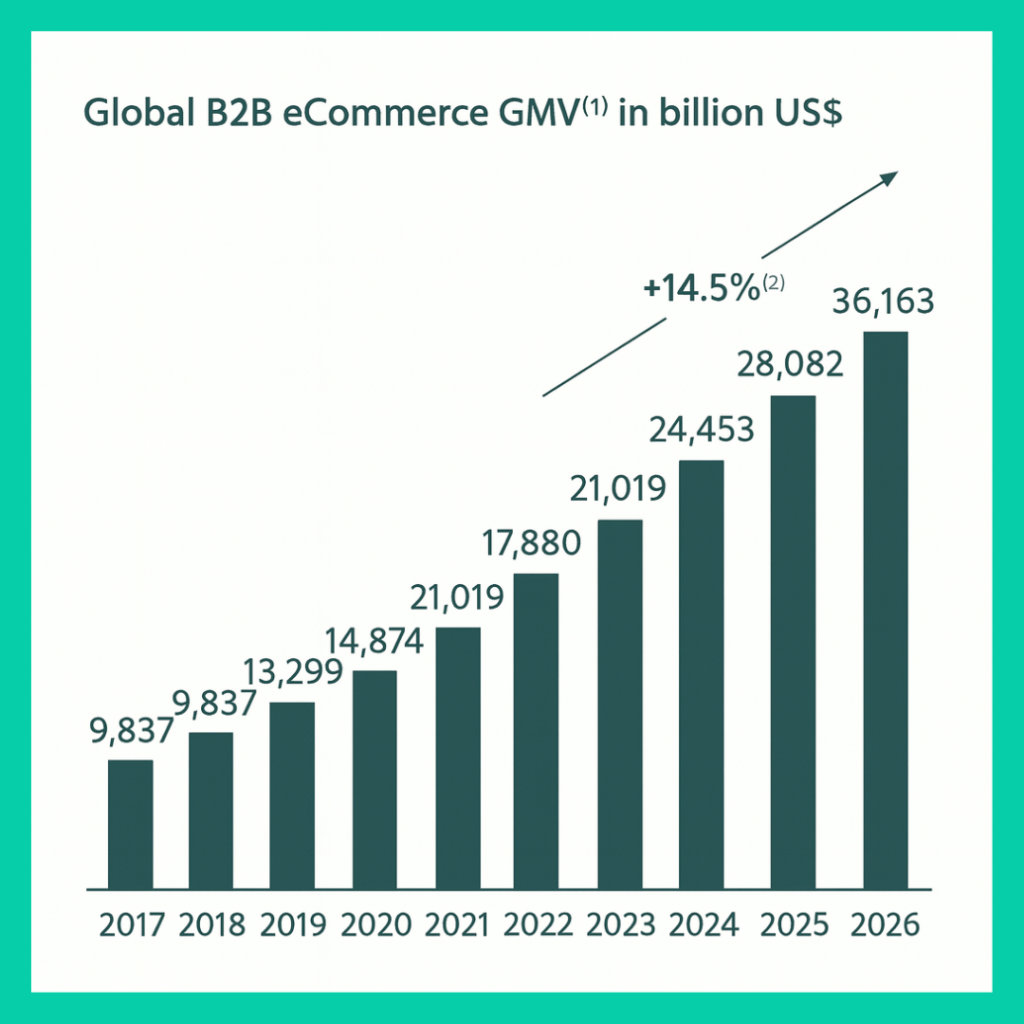
Fulfillment vs. order fulfillment
People often use the terms interchangeably, but there’s a useful difference. “Fulfillment” is the end‑to‑end logistics engine that connects supply (your inbound inventory and storage) with demand (your orders), including returns. “Order fulfillment” is the sequence of tasks to process a single order – confirming inventory, picking, packing, labeling, shipping, and updating the customer. Think of order fulfillment as one loop within the broader fulfillment system.
The e-commerce fulfillment process, step by step
The basic steps are the same whether you sell DTC or B2B. B2B adds a few extra controls and documents, which we’ll call out as we go.
Inventory receiving starts when a truck or container arrives at the warehouse. Teams check counts and conditions and log items into a warehouse management system (WMS). For B2B flows, suppliers or brands may send an electronic “warehouse shipping order” to a 3PL (an EDI 940), and the 3PL confirms shipment completion later with an EDI 945. Retail and wholesale buyers often require an Advance Ship Notice (EDI 856) before goods reach a distribution center. These documents reduce errors and speed dock operations.
Storage and warehouse management comes next. A WMS directs put‑away, slotting, cycle counts, and replenishment. Good WMS tools shrink travel time for pickers, protect inventory accuracy, and surface real‑time stock levels to the rest of your stack. Gartner defines a WMS as software that helps “intelligently execute” warehouse operations, from receiving through packing and shipping.
Order processing and picking begins once an order lands. In B2C, that may mean single‑line picks from bins. In B2B, it can mean case‑ or pallet‑level picks to a retailer’s routing guide. If you’re shipping into a big‑box or marketplace network, you’ll likely need labels, carton contents, and data to match the ASN you sent.
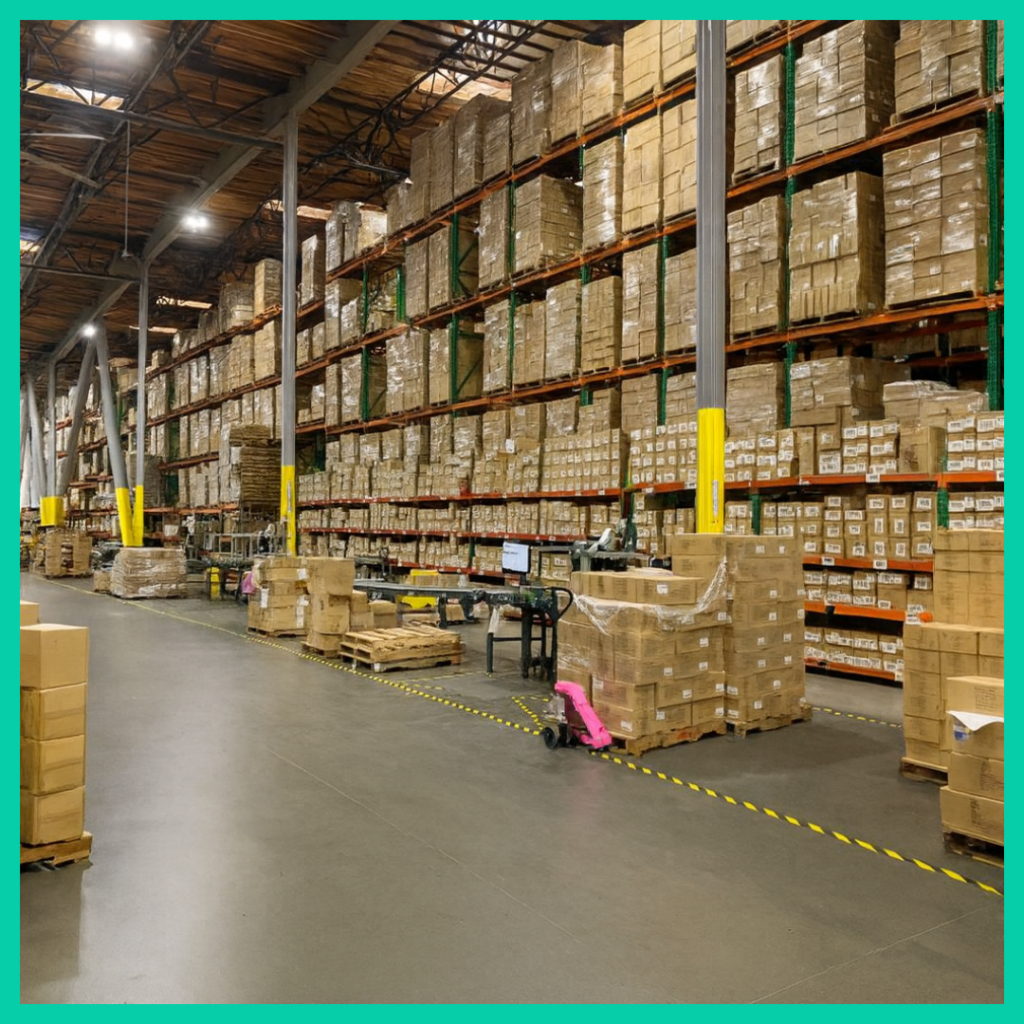
Packing and labeling protect the product and satisfy each channel’s rules. For Amazon FBA inbound, for example, carriers must book a dock appointment at the destination fulfillment center through Carrier Central or Amazon’s FAST tool. Arriving without one can lead to rejection at the dock, delays, and added cost. A 3PL or freight forwarder that handles these bookings keeps freight moving and prevents chargebacks.
Shipping and tracking hand the baton to parcel, LTL, FTL, air, or ocean carriers. Real‑time transportation visibility platforms (RTTVPs) ingest carrier pings, traffic, and weather to produce live ETAs so your team and your customers know what’s happening.
Returns and reverse logistics close the loop. With return rates as high as they are, brands that treat returns as a process – not an exception – recover more value and keep customers loyal. Many retailers are upgrading returns capabilities to manage costs and fraud while maintaining a smooth customer experience.
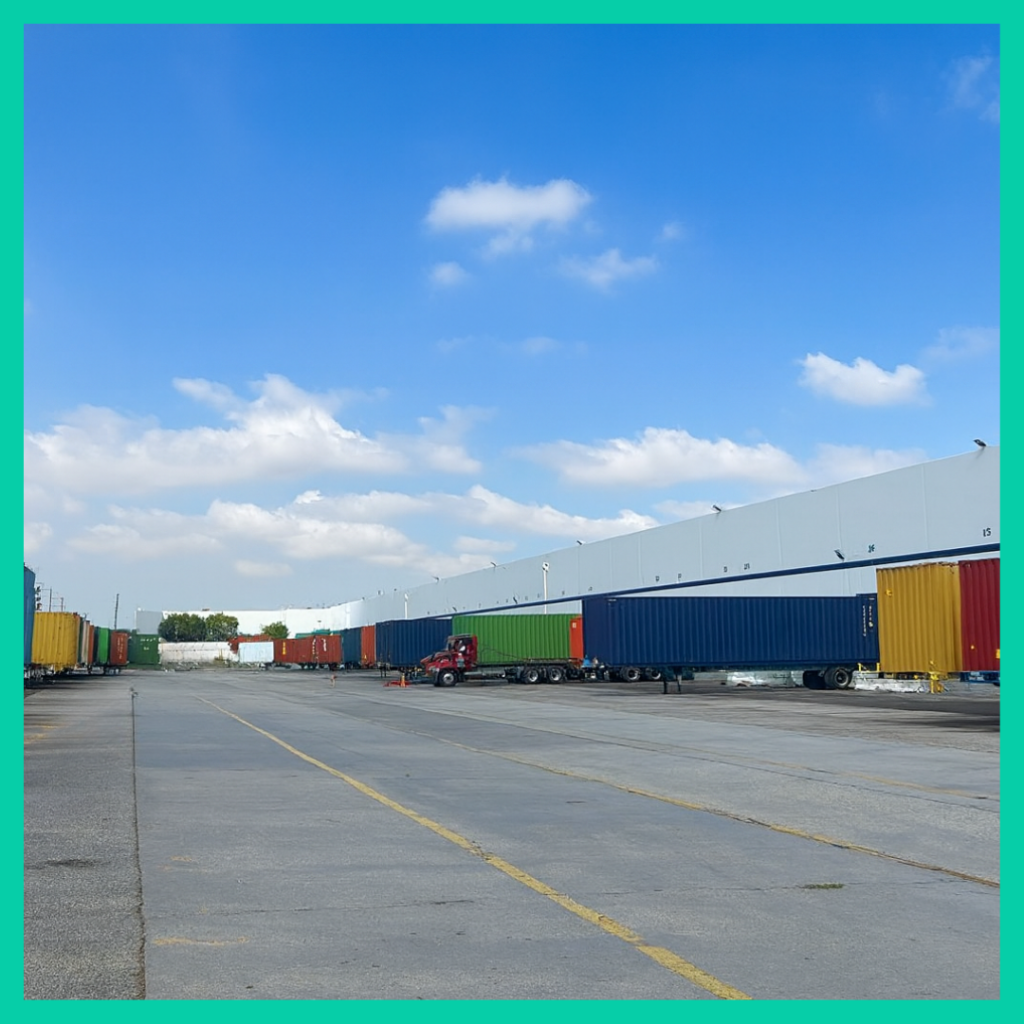
Technology in the fulfillment process
Modern fulfillment runs on connected software. Three systems are foundational.
- A Warehouse Management System (WMS) orchestrates the warehouse: receiving, put‑away, inventory tracking, picking, packing, and shipping. It also integrates with automation and labor tools.
- An Order Management System (OMS) sits closer to the customer and sales channels. It consolidates orders across your website, marketplaces, EDI, and wholesale portals, decides where to fulfill from, exposes order status, and routes returns. Industry definitions frame OMS as the platform that manages an order’s lifecycle from capture through delivery and post‑purchase service.
- A real‑time visibility layer watches freight after it leaves the dock. RTTVPs combine GPS, carrier data, and context to show where goods are and when they will arrive, enabling proactive updates and exceptions handling.
These systems, tied together with your ecommerce platform and financial tools, cut errors and give you the single source of truth you need to scale.
Fulfillment models: in‑house, outsourced, and hybrid
There isn’t one “right” way to fulfill. Your choice depends on order volume, growth rate, SKU mix, channel mix, and cash.
In‑house fulfillment gives you full control. It’s attractive for early‑stage DTC brands and for specialized B2B operations that need tight process control or unique value‑added services. The trade‑off is fixed costs, hiring, and the burden of designing processes and systems yourself. As you scale, capital and management attention shift toward warehousing instead of product and market.
Outsourced fulfillment (3PL) means a logistics partner stores your inventory and handles day‑to‑day operations. This usually adds geographic reach and lets you flex capacity during peaks. It’s important to understand how outsourced fulfillment differs from dropshipping. A 3PL ships the inventory you own from its facilities, whereas dropshipping sends orders straight from a supplier that owns the inventory. If you’re building a brand and want consistent unboxing, SLAs, and network design, a 3PL is the better match; dropshipping shines when capital is tight and assortment testing matters most.
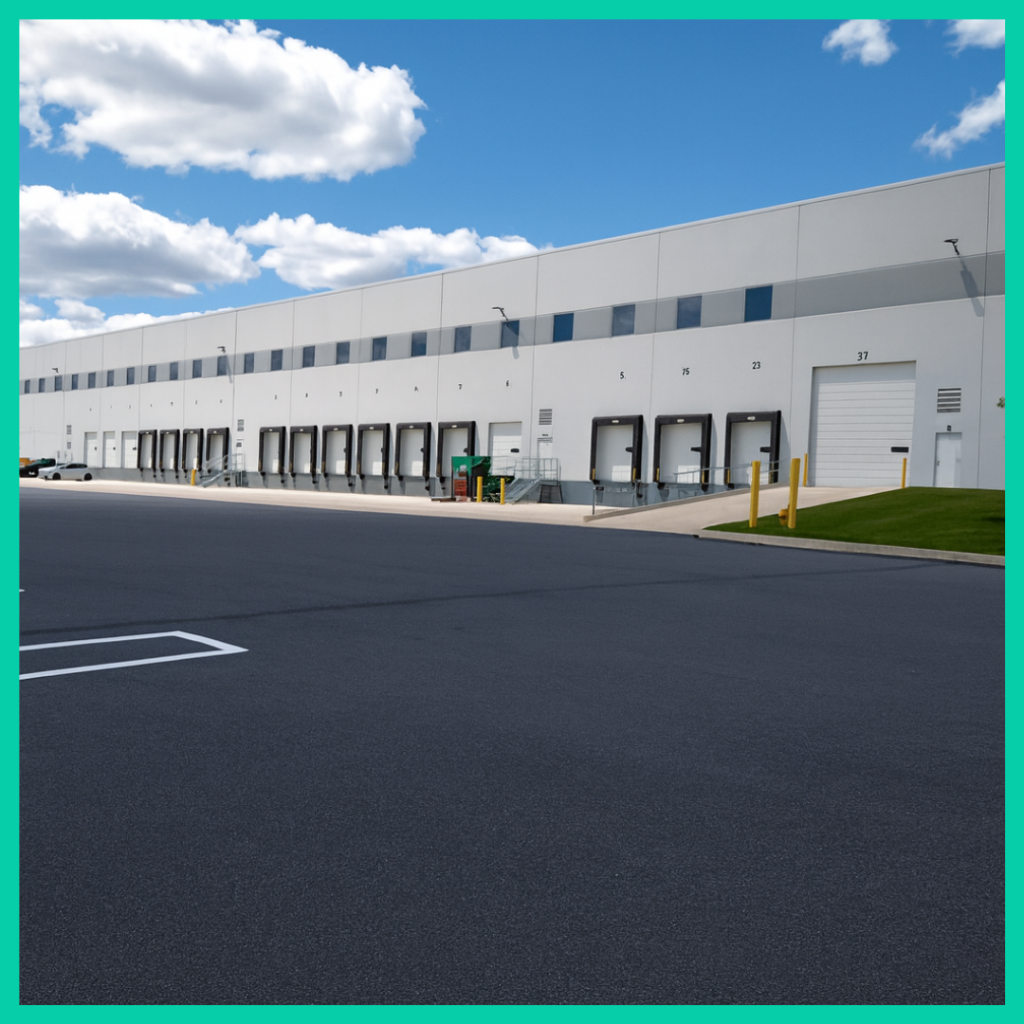
Hybrid fulfillment blends both. Many brands keep a small in‑house operation for high‑touch SKUs or local customers while a 3PL handles the bulk. Others split by channel: FBA or retailer DCs for part of the catalog, and a 3PL for DTC and B2B wholesale. The key is clean inventory and order routing so you don’t oversell.
Key resources and tools
Fulfillment hinges on reliable inventory accuracy, workable carrier integrations, and a returns platform that matches your policies. RFID and disciplined process can lift inventory accuracy into the mid‑90s, which reduces stockouts and mis‑ships. When accuracy is high, your OMS can confidently promise ship‑dates and your WMS can pick correctly the first time.
Returns software connects your storefront, OMS, and 3PL so you can authorize returns, generate labels, direct items to the right node, and choose the best outcome – restock, refurbish, or liquidate. With returns at roughly one in six orders industry‑wide, a tight returns flow is table stakes.
Choosing the right fulfillment strategy for your business
Start with the basics: cost, coverage, and control.
Cost versus scalability
In‑house can be cost‑effective at a small scale if you already have space and staff. As order volume grows or seasonality spikes, variable‑cost models with a 3PL often win. They let you “pay by the drink” for storage and touches, and they absorb peaks without scrambling for temporary staff.
Geographic coverage and speed
Carriers price by distance as well as weight. In the U.S., “shipping zones” are distance bands from the origin; the further the zone, the higher the typical cost and the longer the transit. Distributing inventory across multiple nodes shortens average zone distance, which reduces costs and improves delivery speed. McKinsey estimates that a network of about three DCs can reach roughly 80% of the U.S. population with two‑day delivery; moving to next‑day for the same coverage may require many more sites.
Tech integration
Ensure your 3PL can connect to your ecommerce platform(s), marketplaces, and EDI partners, and that you can see orders, inventory, and shipments in real time. Without clean integration, manual work creeps in and errors multiply.
Compliance and channel rules
If you sell food, supplements, or pharmaceuticals in the U.S., you may be subject to FDA Current Good Manufacturing Practices (cGMP) and facility registration rules. If you handle prescription drugs, DSCSA requires electronic, interoperable tracing and authorized trading partner checks. In retail and marketplaces, routing guides and ASNs are non‑negotiable. Choose partners who live in this world every day.
Brands often underestimate growth and paint themselves into a single‑node corner. They select a partner on price alone and later discover gaps in tech or compliance. They also treat returns as an afterthought until costs spike. Build for tomorrow’s order mix, not yesterday’s, and audit both technology fit and operational maturity up front.
Future trends in e-commerce fulfillment
Industry surveys show a clear rise in adoption and budget for robotics and AI across warehousing and supply chains, as leaders chase speed, accuracy, and resilience. Expect more goods‑to‑person systems, autonomous mobile robots, and AI‑assisted planning in the next few years.
In 2025, a consumer study found nearly a third of U.S. shoppers now consider same‑day delivery “standard.” This doesn’t mean every SKU needs same‑day, but it does mean network design, forward stocking, and local partnerships will matter more.
Without intervention, last‑mile emissions and traffic are on track to climb sharply by 2030. The good news: a mix of delivery model changes, consolidation, and electrification can cut last‑mile CO₂ by up to 30% versus “do nothing” scenarios. Expect more e‑bikes, smarter routing, and network designs that place inventory closer to demand.
Why choose Unicargo as your e-commerce fulfillment partner
Unicargo is a digital‑first logistics company built to simplify global shipping and fulfillment. Our approach blends technology with hands‑on expertise so you get predictability, control, and scale without juggling multiple vendors. Our solutions cover international freight, e‑commerce logistics, global warehousing, purchase order (PO) management, customs and compliance, and reverse logistics – all in one ecosystem.
You get an online platform for live visibility across orders, inventory, and shipments. Dashboards remove blind spots so you can plan and act with confidence.
We help brands navigate the Amazon FBA universe. Our teams integrate with FBA workflows and coordinate the practical details that slow shippers down, from pallet standards to dock scheduling. Amazon requires carriers to book inbound delivery appointments at its fulfillment centers; we manage those appointments and documentation to keep freight moving.
If you sell across channels, we support retail compliance and B2B flows, including ASNs and EDI. Your wholesale customers get the data and labeling they expect, and your DTC customers get fast, consistent unboxing.
Reverse logistics is a core part of our offer. We receive returns, conduct quality checks, refurbish or repackage when appropriate, and route goods for restock or secondary sales so you recover value. At a time when returns weigh on margins industry‑wide, having a returns engine you can trust matters.
Regulatory confidence is built in. Our customs and compliance teams handle clearance, classification, duty optimization, and trade requirements so shipments don’t stall. If you operate in regulated categories, we’ll help you align your warehousing and documentation with the relevant rules.
All of this sits on top of a global network with regional offices across three continents and strategic warehousing, so you can place inventory closer to demand and expand without starting from zero in new markets.
When speed matters at the port, we can transload, palletize by PO, book FBA or big‑box appointments, and inject cargo into domestic trucking – often shaving days off dwell.
If you’re weighing in‑house versus 3PL versus hybrid, we’ll help you model the cost and coverage trade‑offs, design the right mix, and integrate your tech stack. Our goal is to act as an extension of your team, not just a vendor.
Conclusion and next steps
Fulfillment is the engine of your e-commerce experience. Define the full process, not just shipping. Choose technology that makes your inventory, orders, and shipments visible end‑to‑end. Match your operating model to your growth, coverage needs, and compliance obligations. And design returns on purpose.
If you’re outgrowing your current setup – or you’re planning a channel shift into B2B – this is a good time to review your network, your tech, and your partner list. Unicargo can help you benchmark costs, map delivery promises to network design, and stand up an integrated operation that scales.
Ready to talk through your options? Contact the Unicargo team to explore a solution tailored to your business.
FAQ
Q) What exactly does e-commerce fulfillment include?
A) Everything from receiving and storing inventory to picking, packing, labeling, shipping, tracking, and handling returns. Think of shipping as one step inside a larger, repeatable system that protects your promise date and your margins.
Q) Do B2B buyers really need ASNs and EDI?
A) Often, yes. Major retailers commonly require an EDI 856 (ASN) sent ahead of arrival so their DCs can plan labor and validate carton contents against what you said you shipped. Your 3PL or fulfillment partner should generate and transmit these on time.
Q) What core systems do I need to run fulfillment well?
A) Start with a Warehouse Management System (WMS) to orchestrate receiving through shipping on the floor. Add an Order Management capability to centralize orders, allocate inventory, and steer each order to the right node. A real‑time transportation visibility platform then tracks loads after hand‑off and gives accurate ETAs. Clean integrations between these layers reduce manual work and errors.
Q) How do shipping zones affect cost and delivery speed?
A) Carriers price and promise delivery based on distance “zones” from the ship‑from ZIP. Placing inventory closer to demand shortens average zones, which usually lowers cost and improves speed. As a rule of thumb, a three‑node U.S. network can cover about 80% of the population in two days.
Q) I’m shipping into Amazon FBA – do I need a delivery appointment?
A) Yes. Amazon requires carriers to book an inbound appointment before delivering to its fulfillment centers, either via Carrier Central or its FAST tool. A forwarder or 3PL that manages these bookings and documents helps avoid refusals and delays.
Q) What return rate should I plan for?
A) Plan for meaningful volume. Industry research pegged 2024 U.S. retail returns at about 16.9% of sales – roughly $890B – so your reverse flow should be as structured as your outbound flow.


